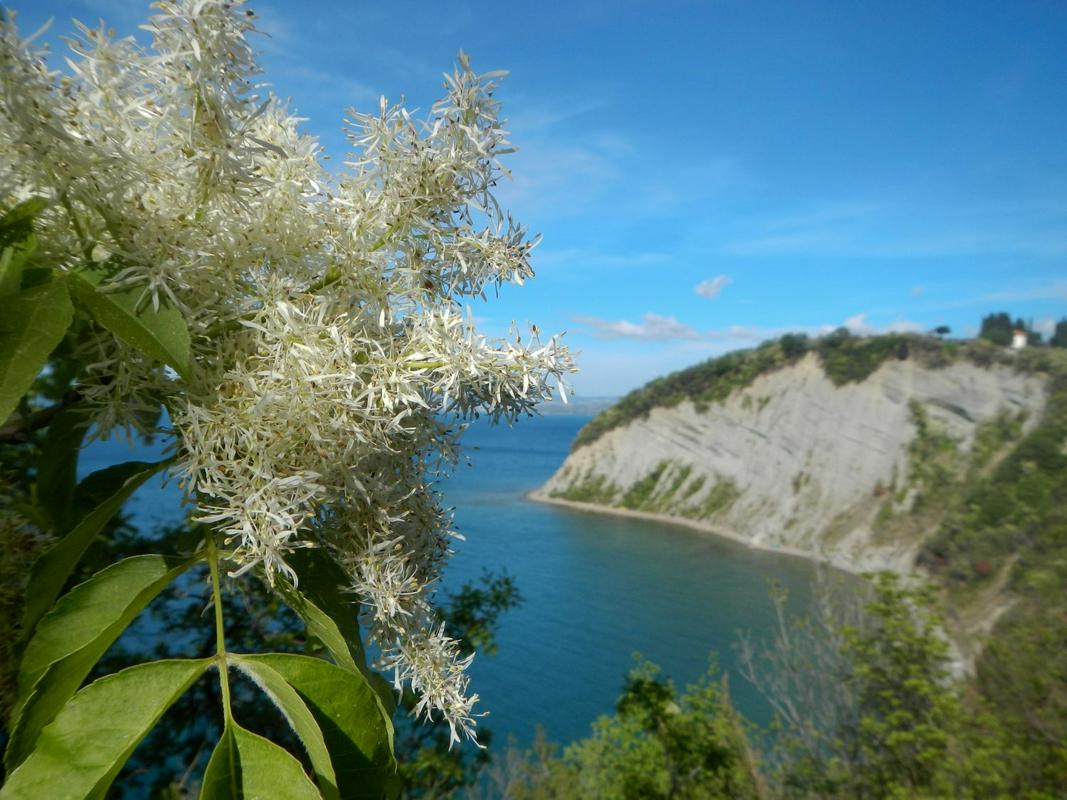
Just a few miles from Slovenia’s well-known coastal resorts lies a wild and largely unexplored natural landscape. Dominated by steep white cliffs rising from the sea, it is known for its abundant flora and fauna – much of which extends under the surface of the Adriatic Sea. Now a protected area, the Strunjan Nature Reserve is one of the most unique natural landscapes in the whole of Slovenia.
For centuries, large parts of the area constituted what was known as “Trieste’s Garden.” Local residents grew fruits and vegetables, which they would later sell in the nearby port city. Today, visitors can walk through olive groves, myrtle bushes, and strawberry trees – a typically Mediterranean landscape – right to the edge of the imposing cliffs that tower as high as 80 meters above the Adriatic Sea.
The preserve is not just the largest segment of protected nature in the Gulf of Trieste; its cliffs are also the highest Adriatic precipice composed of flysch, a soft sedimentary rock. The environment below the surface of the water, however, is just as special. Thanks in part to the diversity of sands – ranging from flysch to pebbles, the waters are rich in fish, clams, snails, squid, octopuses, crabs, and sea urchins – which also provide fodder for a wide variety of birds. This part of the coast has attracted fishermen for centuries. Since the area was declared a national reserve, fishing in the 200-meter protected belt has been carefully managed, ensuring that its abundant marine life remains unthreatened.
High above the cliffs, the Church of the Virgin Mary’s Apparition attracts worshippers from around the region. The original structure was built in 1200, but it became a popular pilgrimage destination after the Virgin Mary appeared to two local watchmen in 1512. Nearby, a cross on the very edge of the Strunjan cliffs is a reminder of another famous apparition. According to a local legend, the Virgin Mary appeared on that spot during a storm and warned sailors that they were approaching dangerous cliffs.
Slovenia has one of the shortest seacoast of any European country, but in the form of the Strunjan Nature Reserve, it includes one of the most unique and attractive landscapes in this part of the Mediterranean – one that most visitors have yet to discover.

































































